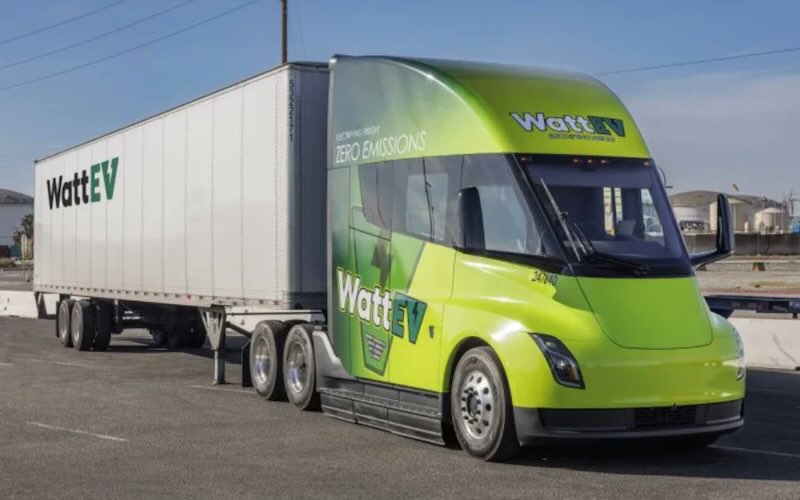WattEV Accelerates Electrification of Freight with Tesla Semi Deal through a landmark agreement to integrate 40 Tesla Semi trucks into its fleet by 2026. The company has already secured two units for deployment in 2025, positioning itself as the first to operate Tesla’s heavy-duty electric trucks at the Ports of Long Beach and Los Angeles.
WattEV’s operational strategy hinges on maximizing daily mileage, with current routes in California achieving up to 550 miles. CEO Salim Youssefzadeh attributes this capability to the Tesla Semi’s 500-mile range and energy-efficient design, calling it “a game-changer for high-demand logistics.” By leveraging rapid charging and minimizing downtime, the company aims to prove electric trucks can outperform diesel models in rigorous, real-world conditions.
The partnership also includes plans to install Tesla’s Gen 4 superchargers, capable of 1.2MW outputc, across WattEV depots. This infrastructure will complement existing CCS compatibility while future-proofing for the emerging Megawatt Charging System (MCS) standard. “Scalability is key,” Youssefzadeh noted. “Our depots are designed to evolve alongside advancing technology, ensuring seamless transitions as industry demands shift.”
With the Tesla Semi deployment, WattEV Accelerates Electrification of Freight with Tesla Semi Deal by targeting regional and interstate routes. The company’s collaboration with Tesla extends beyond hardware, incorporating data-sharing initiatives to optimize route planning and energy use. Analysts predict this could set a precedent for broader adoption of electric heavy-duty vehicles in freight logistics.
As regulatory pressures mount and sustainability targets tighten, WattEV’s early-mover advantage positions it as a catalyst for industry-wide change. The deal not only underscores the viability of electric freight but also highlights the urgency for infrastructure investment to support large-scale electrification.
Related Post
Tesla First SemiCharger Launch: V4 Superchargers & 1.2 MW Power Set for Carson, CA
Tesla V4 Supercharger: Revolutionary 500kW and 1.2MW for Semi Charging Coming in 2025
Martin Brower Goes Electric With Tesla Semi Pilot, Out of their Distribution Center
